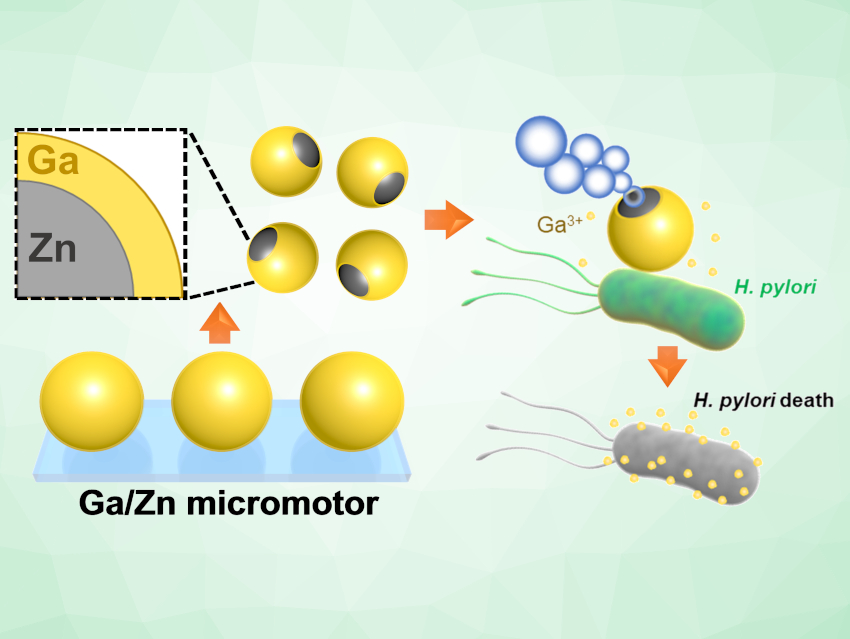Gallium ions [Ga(III)] could exert antimicrobial activity against bacterial pathogens without inducing cross-resistance to conventional antibiotics. However, the antibacterial activity of Ga(III) is limited by its inefficient delivery in biological environments. The use of micromotors with high mobility in various biological fluids could be promising for active antibacterial treatment.
Changyong Gao, Qiang He, Harbin Institute of Technology, China, and colleagues have developed a bubble-propelled Janus gallium/zinc (Ga/Zn) micromotor with good biocompatibility and biodegradability as a robust antibacterial platform. These Ga/Zn Janus micromotors were fabricated by partially coating the Zn core with a Ga layer through a microcontact printing method.
The Janus Ga/Zn micromotors move rapidly through gastroenteric fluid at a speed of up to 382.3 μm s–1. The motion of the micromotors is powered by the hydrogen bubbles generated from the spontaneous reaction between the Zn core and gastroenteric acid. The gallium coating galvanically enhances this zinc-acid reaction and is effectively transformed into the built-in antibiotic agent Ga(III).
This motion-enhanced delivery of Ga(III) gives these Ga/Zn micromotors a stronger antibacterial effect against bacteria such as Helicobacter pylori compared with passive Ga microparticles. Such Ga/Zn micromotors combine the self‐propulsion, good biocompatibility and biodegradability, and Ga‐based antibacterial properties, providing a proof of concept for the active treatment of bacterial infections.
- Bubble‐Propelled Janus Gallium/Zinc Micromotors for the Active Treatment of Bacterial Infections,
Zhihua Lin, Changyong Gao, Daolin Wang, Qiang He,
Angew. Chem. Int. Ed. 2021.
https://doi.org/10.1002/anie.202016260



